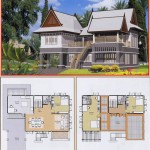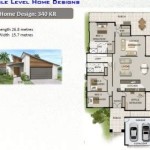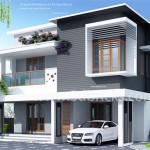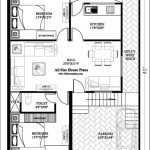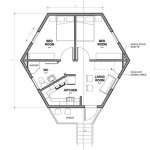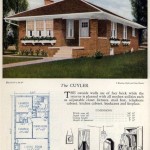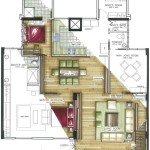Contemporary Dogtrot House Plans: A Modern Take on a Southern Classic
The dogtrot house, a staple of Southern vernacular architecture, is experiencing a resurgence in popularity. Its distinctive open-air breezeway separating two living areas provides natural ventilation and a shaded outdoor space, perfectly suited for warmer climates. While traditional dogtrot homes often evoke a rustic aesthetic, contemporary adaptations are incorporating modern design elements, creating a unique blend of old and new.
Contemporary dogtrot house plans retain the core characteristic of the separated structures connected by a breezeway, but utilize modern materials and design principles. The breezeway, the heart of the dogtrot, remains a central focus, often featuring expansive windows, comfortable seating, and outdoor dining areas. This space serves as a transition between the two wings of the house, creating a natural flow while maintaining distinct zones for living and sleeping.
The flexibility of the dogtrot design allows for various configurations. One common approach is to dedicate one wing to public spaces, such as the living room, dining room, and kitchen, while the other houses private areas like bedrooms and bathrooms. This separation provides privacy and allows for customized design within each wing. Some contemporary dogtrot plans even incorporate guest suites or home offices in one wing, fostering independent living or workspaces.
Materials play a crucial role in distinguishing contemporary dogtrot homes from their traditional counterparts. While wood remains a popular choice, it's often used in conjunction with modern materials like steel, concrete, and glass. Large expanses of glass, particularly in the breezeway and public living spaces, maximize natural light and create a seamless connection with the outdoors. The use of concrete and steel adds a touch of industrial chic and allows for larger, more open floor plans.
Sustainable design principles are often integrated into contemporary dogtrot house plans. The natural ventilation provided by the breezeway reduces the need for air conditioning, while strategically placed windows and overhangs can minimize solar heat gain. Solar panels and rainwater harvesting systems are also frequently incorporated, contributing to energy and water efficiency.
Rooflines in contemporary dogtrot homes often depart from the traditional gable roof. Flat roofs, shed roofs, and butterfly roofs are increasingly common, lending a more modern aesthetic. These roof styles can also accommodate green roofs or rooftop gardens, further enhancing the home's sustainability and visual appeal.
Interior design in contemporary dogtrot homes often reflects a minimalist or modern farmhouse aesthetic. Clean lines, neutral color palettes, and natural materials like wood and stone create a sense of calm and spaciousness. Open floor plans within each wing enhance the flow of light and air, while carefully chosen furniture and decor complete the contemporary look.
Landscaping plays a vital role in integrating the contemporary dogtrot home into its surroundings. Native plants and drought-tolerant landscaping reduce water usage and maintenance, while strategically placed trees and shrubs can provide shade and privacy. Outdoor living spaces, such as patios and decks, extend the living area and create opportunities for enjoying the natural environment.
The adaptability of the dogtrot design makes it suitable for a variety of lot sizes and orientations. Whether situated on a rural acreage or a suburban lot, the dogtrot can be customized to fit the specific needs and preferences of the homeowner. Careful consideration of site conditions, such as sun exposure and prevailing winds, is essential for optimizing the home's performance and comfort.
The cost of building a contemporary dogtrot home can vary significantly depending on the size, complexity of the design, and chosen materials. While the open-air breezeway can potentially reduce construction costs compared to a fully enclosed home of the same square footage, the use of high-end materials and finishes can offset these savings. Working with an experienced architect and builder is essential for developing a realistic budget and ensuring that the project stays on track.
Contemporary dogtrot house plans offer a compelling alternative to conventional home designs. By blending the traditional charm of the dogtrot with modern aesthetics and sustainable practices, these homes provide a unique and comfortable living experience. The focus on natural ventilation, outdoor living, and flexible spaces makes the contemporary dogtrot a desirable option for those seeking a home that is both stylish and environmentally conscious.
The resurgence of the dogtrot in contemporary architecture demonstrates the enduring appeal of this classic design. Its adaptability and inherent connection to the outdoors make it a relevant and attractive option for homeowners seeking a unique and functional living space. By embracing modern materials, sustainable strategies, and innovative design elements, the contemporary dogtrot continues to evolve while retaining the essence of its Southern heritage.

Mid Century Modern Dogtrot House Plan With 4 Beds And 3 Baths 623172dj Architectural Designs Plans

Dog Trot House Plan Dogtrot Home By Max Fulbright Designs

Urban Passive Solar Corner House Cabin Attitude In The City Dog Trot Plans Dogtrot Small

Dream Interiors This Would Be Perfect For Any Home Dog Trot House Plans Cabin Floor

Dogtrot House Plan Large Breathtaking Dog Trot Style Floor

Great Compositions The Dogtrot House

3 Bedroom Dogtrot House Plan 92318mx Architectural Designs Plans

Diana S Dog Trot Dogtrot Cabin Floor Plan House Plans

Dog Trot House Plan Dogtrot Home By Max Fulbright Designs

Modern Prefab Cabin The Passive Solar Dogtrot Mod House

